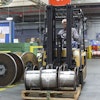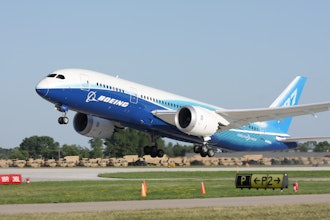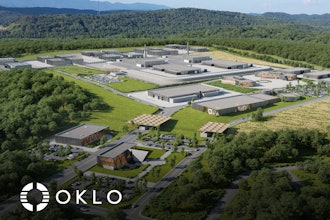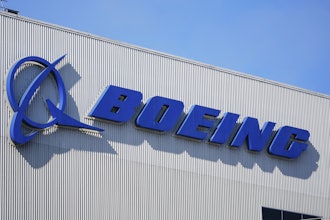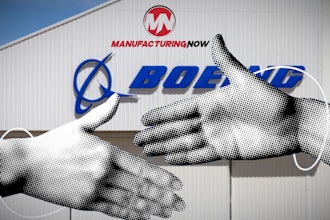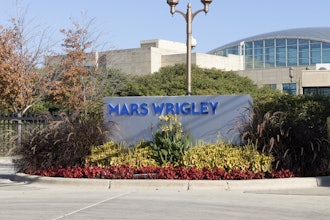The importance of water quality cannot be underestimated by food manufacturers. It plays a vital role, both as a critical ingredient in ensuring food quality and as a key to efficient production. For example, foods such as canned soups and vegetables contain a high percentage of water once they have been cooked and packaged. It is important that the water produces no flavors or smells which might affect the quality or consistency of the final product. In the manufacturing process itself, quality water is also needed in for boiler feed makeup to help facilitate the removal of scale-producing precipitation and reduce the frequency of blow-downs.
Ultimately, the type of water required to meet your food quality standards and production goals determines how to select the right water treatment system for your needs. Following are five considerations to help guide you in this process:
1. Assess incoming water sources at every location
Evaluating incoming water sources for every plant location is an important but often overlooked step in the process. A large food manufacturer with multiple plant sites can experience a wide variance in water quality at each location, which can impact the universal consistency of the final product. Therefore, each plant’s water source must be evaluated on an individual basis to determine the right water treatment matrix for that site.
The first step is to inquire with local water municipalities in each plant location to better understand the unique variations in the local water source. Ask which municipal disinfection practices are used for disinfection, such as chlorine or chloramines. Inquire about water supply seasonal variances that can affect well water, surface water or both, depending on available supplies. When are the lines flushed out? When this happens, iron can be sent in the municipal water system and cause discoloration or alter the taste of certain products. Keep an open dialogue with your local municipality and ask them to keep your company informed in advance if there are changes made to the water processes.
Once the quality of the incoming water source is identified, look closely at how water quality plays a role on different applications throughout each plant. Food manufacturers that switch to higher purity water have seen beneficial effects in how their process and quality of their product is impacted. For example, a pickle company who typically used municipal water to make up the brine that soaked the pickles decided to switch to high purity water. In doing so, the manufacturer discovered it could get more taste and flavor from the pickles, but use fewer ingredients to create the brine. Not only was there a significant savings, but the higher quality water produced a better product. Another case involved a bakery goods company that discovered that dry ingredients dissolved in high purity water produced higher quality bread and other products.
2. Create reliable signals to assure quality standards
After any variances in the local water supply are identified, food manufacturers can then begin to treat these issues at the source to experience better savings and quality. But it’s just as important to maintain these quality standards over time. Setting up alerts to signal when quality or operational points aren’t being met can give assurance that the water quality will be consistently maintained.
Global electronics are emerging in the water treatment industry as a supplement, or even as an alternative, to traditional programmable logic controllers (PLCs) at a fraction of the cost. These electronic controllers can even eliminate land lines and generate data at a lower cost as opposed to a very sophisticated PLC that might be used to just “watch” equipment work. Also, in a larger building where there is less supervision, alternative electronic controllers can be positioned right on a piece of equipment and send a signal directly to the PLC using RS-232 or 485 or cellular technology.
3. Discuss sustainability goals with your water vendor
Don’t miss the opportunity to share your company’s sustainability goals with your water vendor. In the end, this could result in a solution that could reduce chemical treatment, save energy, decrease water usage and cuts costs – all leading to better sustainability efforts.
Water vendors can help companies align their sustainability goals to find the ideal water process. For example, there was a potato manufacturer of French fries that had problems with the oil getting into the condensate and creating problems for the boiler. Roughly 50 to 65 percent of their condensate return came back to the boiler, and the remaining portion was sent to the drain. Due to the finite amount of condensate returned, their boiler cycles were limited.
By installing a reverse osmosis (RO) system versus a softener for boiler make up, the manufacturer went from 10 to 15 feedwater cycles of concentration to 50 feedwater cycles of concentration, and reduced blow-downs from 10 to two percent. For every 100 gallons of water that they were producing as steam, 10 gallons in the 10 percent blow-down had been discarded. With RO-treated water, only two percent of that was going to the drain. In addition to saving water, there was an energy savings of $172,000 a year.
4. Properly size your requirements
As discussed earlier, water quality is key for product consistency of food manufacturers serving multi-location retailers, restaurants or food operators. In addition to water being treated to an exact “specification,” it’s important to discuss the specification of flow and quality, so that the water treatment solution can be properly sized.
For example, some food manufacturers might feel they need no more than 100 GPM without realizing that the system has to run at 10 GPM and some equipment has a turndown ratio that may or may not achieve that. Your water treatment partner can help you to better understand how best to evaluate the minimum, maximum and average usage in order to properly size the right components to meet your objectives. Ask yourself:
- Maximum need: what is the maximum flow rate of water required? For how long at this flow?
- Minimum need: what is the lowest flow rate required and for what duration?
- Average usage: what is the daily average water use? Hours in operation per day?
5. Consider retrofit options to update your existing systems
Some companies that cannot change their existing water systems can benefit from retrofit options available today. For example, brine reclaim technology is one way to reduce salt usage by 20 to 40 percent. This option is also beneficial for the environment because it reduces the amount of wastewater sent to drain. Other technologies can perform progressive flows, which use more than one vessel to soften water and ensure against low flow – an indication of poor water quality. In the end, there are a number of updates and upgrades that are cost effective and provide a significant return on your investment.
Ensuring the best water treatment system for your plant starts today
Producing good quality water is vital, but utilizing less water and energy, requires innovation in water treatment technology. New Nano-filtration technology, for example, addresses concerns about chloride restrictions in states like California or Florida by allowing ion exchange without chloride output. Also, products using Nano technology and unique processes can help reduce future membrane operating costs by decreasing or eliminating the cost of system sanitizations. Food manufacturers are also able to better recycle with ultra-filtration technology so that grey water can be reused in other parts of the plant.
By considering these new innovations and following the simple steps outlined above, food manufacturers can select the right water treatment approach upfront to yield the best return downstream.
Edward Orvidas can be reached at [email protected].
